We are talking about the choice of thermal insulation materials, the necessary tools and the process of rooting the cut of pakrels, moss, jute and modern sealants.
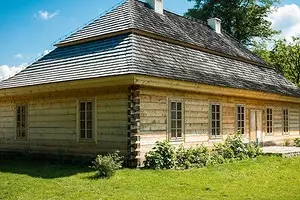
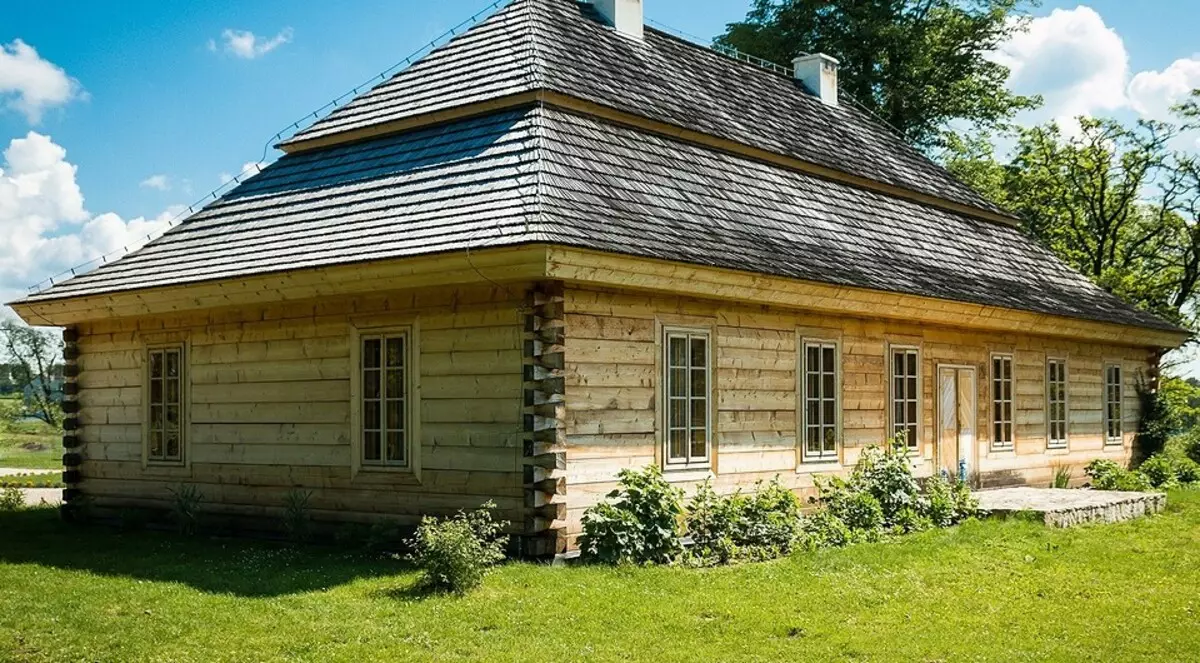
The process of the cutter of the cut is the laying of an insulator, which can be carried out as construction time, as a few years later, when the building gives a shrinkage and new gaps will appear in it. It is carried out, if necessary, when in the premises there are drafts, and with overhaul. In order to properly perform work, you will need a special tool for the cutter of the cut and thermal insulation materials. Special skills will not need, since all the technology comes down to filling the voids in the wall with fibrous material or ordinary moss, brought from the forest and dried. Consider in the article how to careen a log house with different materials.
All about the pantry cut
MaterialsRequired tools
Sounds of laying insulation during construction
Warming with unformed fibers
Using natural moss
Warming with ribbon materials
The use of modern sealants
Materials for thermal insulation
Some of them are used not one hundred years. In quality, they are not worse than modern minvat or synthetic sealant. With proper laying, they will serve for a long time, providing reliable protection from cold and drafts.
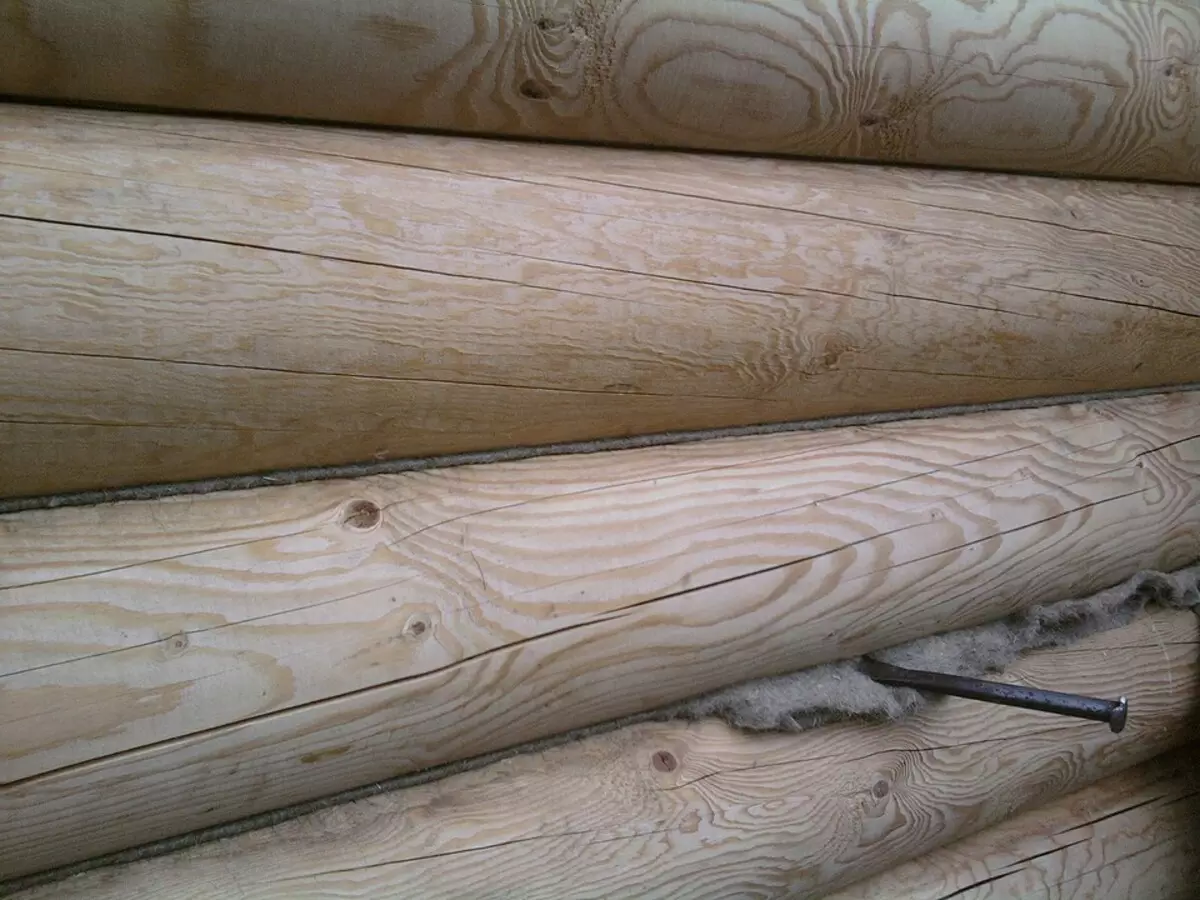
- Jute is a vegetable fiber with high strength. It does not deteriorate under the influence of dampness and is suitable even for baths and raw baseballs in contact with the soil. It is produced in the form of a bale packley, ropes and a canvas consisting of short vile. Jute has a soft structure. It is convenient to work with him. Service life - from 3 to 5 years.
- Pacle - it is made of jute, hemp and natural flax. Hemp and flax are susceptible to rot, so it is better not to use them in a humid environment without impregnation with antiseptics. Products are made in rolls or in the form of a shapeless mass, packaged in bags. The structure has a high density and holds cold better than other insulation. For the same reason, it is more difficult to legitimize the gaps. The panel for the cutter of the cut is not more than 3-4 years, after the expiration of the service life is better replaced.
- Felt - produced in rolls. It is often added additives that reduce conductivity, but they can reduce vapor permeability. Because of this wall breathe worse. The natural component made without additives is more efficient and more durable than its analogues, but is spoiled under the influence of bacteria. In addition, inside may start mol.
- Linovatin - a cloth of short linen fibers. It does not contain chemical impurities and does good temperature. His structure actively absorbs moisture from the logs, protecting them from rotting. Fliminatin does not deteriorate from dampness, but insects may start in it. Before laying, it is necessary to process the insulation with an antiseptic solution. At high temperature in the steam room, antiseptic impregnations begin to release substances with a sharp smell, so flanutin is used mainly for external walls of ordinary residential and country houses. The service life is not more than 3 years.
- Moss is one of the most effective insulation. It does not need antibacterial impregnation, since he himself distinguishes the substance that prevents the formation of microorganisms. It is collected in the forest, after which they purify from the ground and dried. No drying walls will be raw. If you dry for too long, the moss will begin to crumble when pressing. There are factory products, but they are rarely found and are expensive. To properly hold stacking, special skills are needed.
- Synthetic sealants - they are used as impregnation for fibrous materials, or simply fill with their emptiness. Sealants are produced in the form of elongated round and rectangular briquettes. They are used only for cylindered logs with semicircular grooves. The coating fills all empties and serves several times longer than its natural analogues.
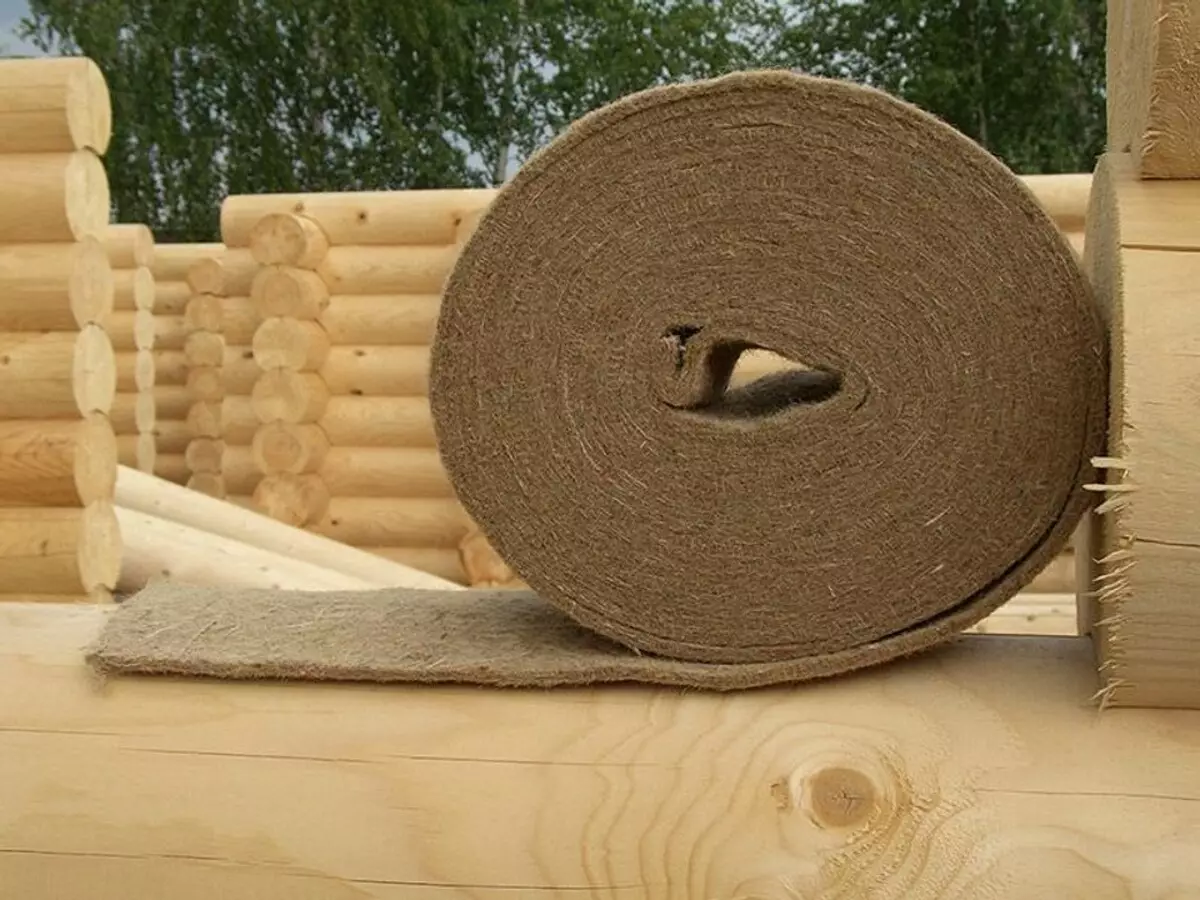
Required tools
- A set of blade - she has a basic work. It is a straight blade on the handle, a narrowed in front. The blade length is about 20 cm. The width of the handle is 15 cm, at the end - 10 cm. Bold the tool is not necessary - otherwise it will bloom the fabric and spoil the array. Thickness at the end - 5 mm. The total length of the product is 30-40 cm. It is pulled out of solid wood or welded from steel.
- The crooked metallic chisel with the work side is 5 cm. It is convenient to work in the corners and on the rounded areas.
- A shovel with triangular deepening - the fibers are selected and smooth rollers twist from them.
- Smooth wedge width 3 cm - they are expanding the gaps.
- Kiyanka from the array - she is hugged by the handles of wooden tools. Metal hammer will quickly lead themselves.
The working part needs careful grinding. The rough surface is constant cling to the loop and pulls them out of the seam.
Conventional carpentry tools are poorly suitable for laying and tamping insulation. First, they are not convenient to cross the voids, and secondly, they will damage the insulator or come into disrepair.
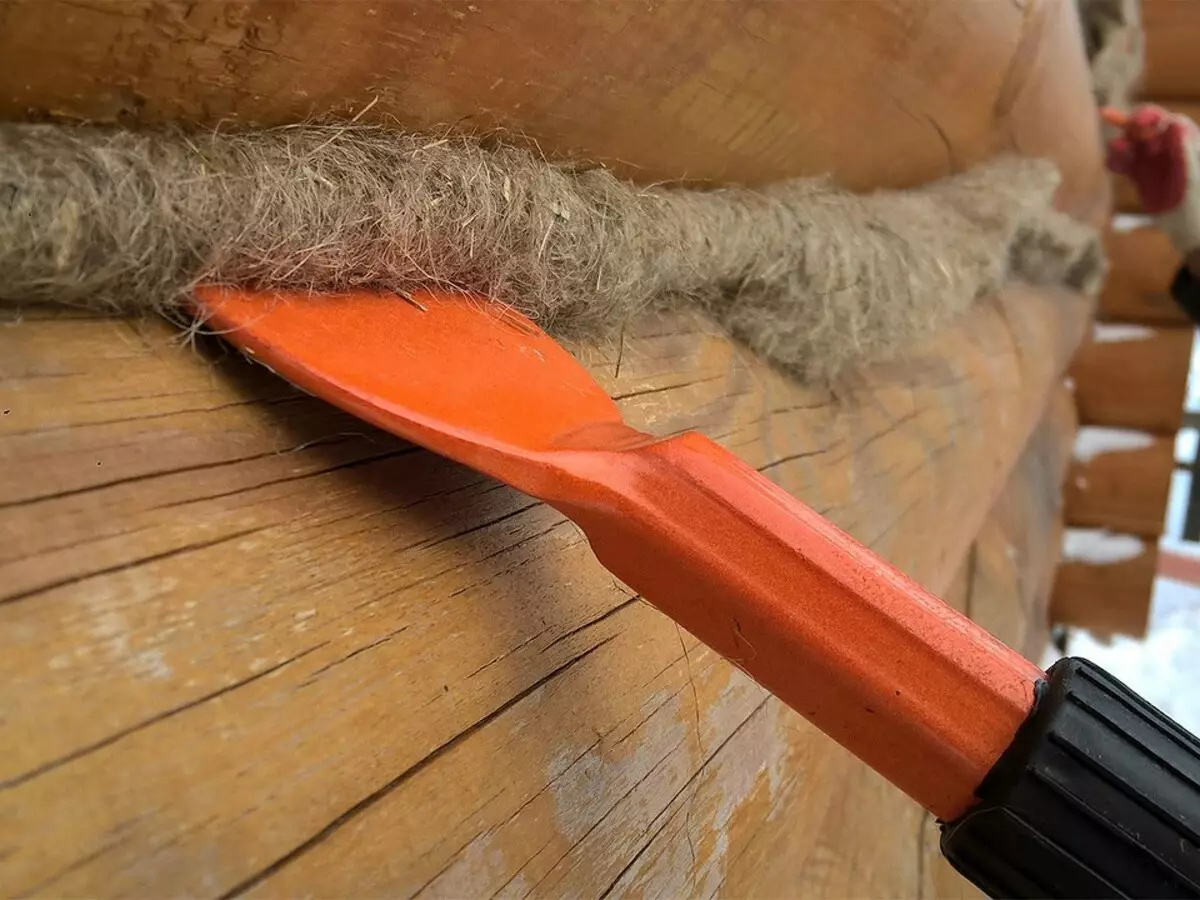
When laying insulation
Crop cathed in your own hands can be carried out in different ways.Methods of sealing seams
- Mass or canvate spread on each row of logs (crown) so that the edges be fed from both sides. Then set the next crown. Ends of the trambet after the construction of the roof. If you score them before all rows are laid and the wall design has received a complete and uniform load, the house can skew, as the canvas has a significant pressure on each tier. The technology does not differ depending on the height, appointment and architectural features of the construction.
- The insulation is glitched into empty clearances after the construction of the roof. A tape material or rope fit for work. The fibers on both sides are driven into the slot so that they hang down at 5 cm, then rollers turn out of them and fill them free space. You need to do it immediately on all the walls, bypassing the crown around the perimeter. If you insulate first one side, the distance between the tiers will increase and the noticeable breakdown will occur, which will be difficult to correct. In order to avoid errors, it is recommended to use the construction level.
More often use the first way, since it is more convenient and more efficient. With overhaul, the second is suitable.
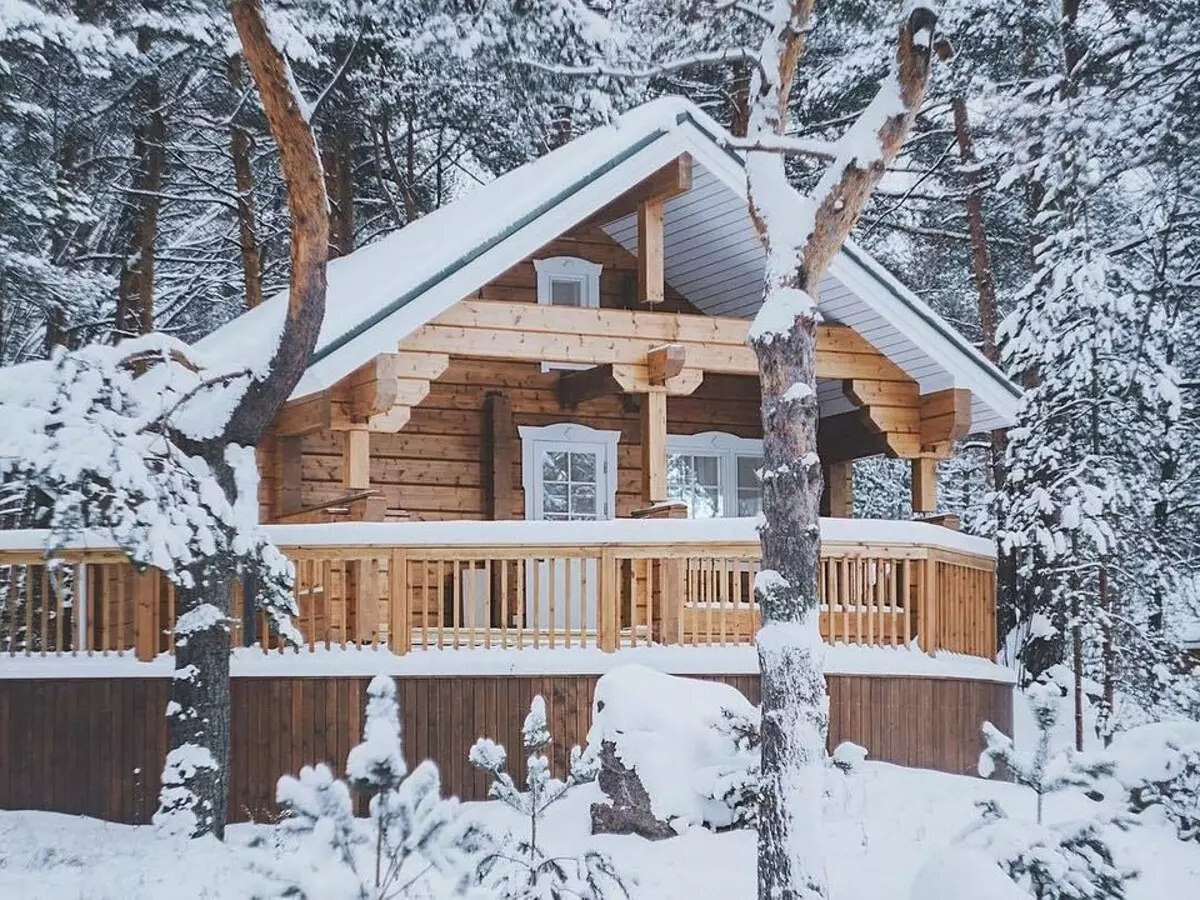
Is it possible to careen a log house in winter
It is better to choose a warm period for work. In the fall and in the spring are raining, and dampness rises from the earth. In no case can not soak. Dry frosty air is safe if the insulation does not need a drying. Frozen water must be removed. Make it in the fresh frosty air will not succeed. Work will have to postpone the time of snowfall and strong wind. With a strong frost, wood is expanding due to the freezing of water in its structure. When thawing, it returns to its original state and the seams are decomposed.

Instructions for thermal insulation packles
The pass is laid on the lower crown of a layer of 2-4 cm. Ends should hang 10 cm on each side. From above, the second row of logs and cover it with palauls. Thus collect the whole house.
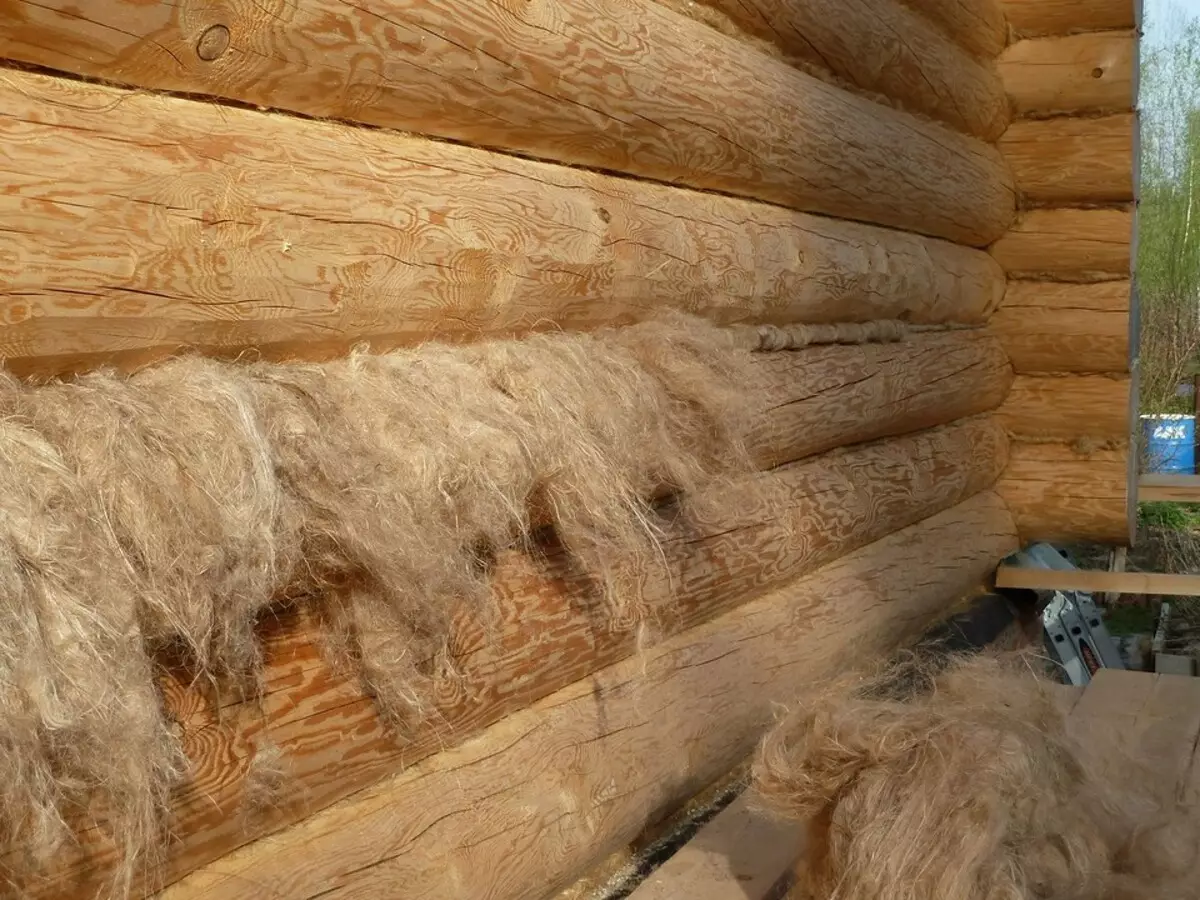
After installing the roofing coating, go to the second stage. The ends are converted and tightly clogged in the seams. As a result, a solid continuous roller is formed. Wooden tools are suitable for work. They are softer steel and damage the fibers less. Move better from corners to the center. Corner seals should be paid to special attention, as there are more emptiness in these places. In addition, at the joints of the cold is not transmitted from one, but immediately from two surfaces perpendicular to each other.
First bypass the lower crown around the perimeter, then gradually rise upstairs. If necessary, several strands are added to the seams. They are compacted as long as the place remains. The mass is folded, making a rope with a thickness of 1-2 cm, apply it to the surface and drive inside. There is another method in which the strands are perpendicular to the seam and immerse them, hitting the center.
To drive inside more pacles, you have to apply force. It is important not to overdo it. Under intensive pressure, the row will rise to a large height and the connection of the lower crown will weaken. Usually the top of a single-storey house rises only by 10 cm. Do not allow distortion to help the construction level.
Sometimes the bars fit to each other too tight. As a rule, on the other hand, free space is formed. It is better not to try to drive the material in a narrow place and put it more there, where possible.
The formed rollers should be dense. If the strand manages to eat with your hands, the work is not completed, and it must be continued.
Not only space between logs should be processed, but also cracks in them. Surplus cut, then produce grinding.
The corners are additionally filled and tram a tool with a curve blade repeating their bends. In order to increase the level of thermal insulation, the joints are crucified by rail, putting the passage to them, which will fully fill the inner space.
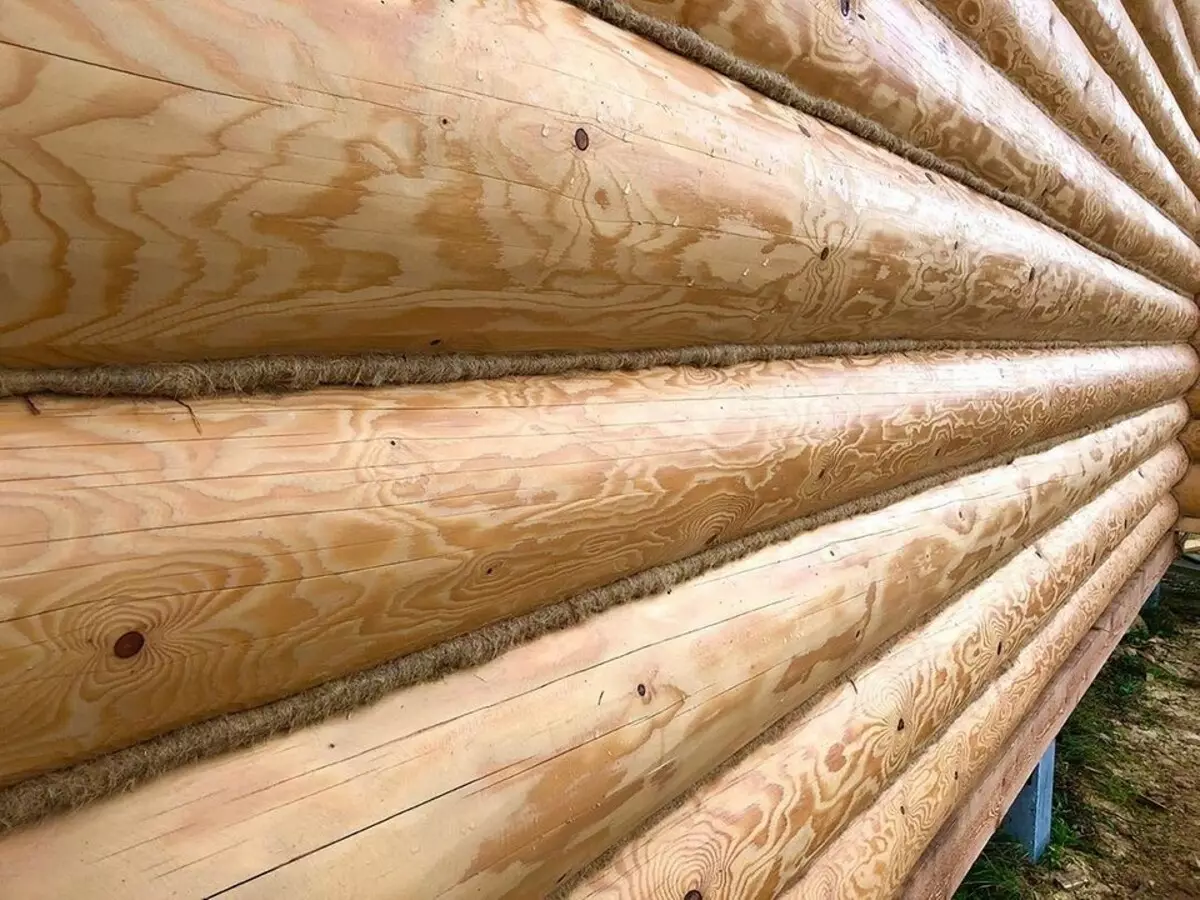
The process of cacopt car moss
Moss are collected in autumn in the forest. During this period, it becomes more. In addition, closer to winter the number of insects inside is not as large as in the warm period. For collection suits dry sunny weather, when the ground is not soaked with rainwater. In the summer it is too dry.In some regions, it is impossible to find a natural seal - only sphagnum and "Cukushkin Len" are suitable for work. In this case, you have to use purchased.
Preparation of material
First, it is cleaned of garbage and soil, then dried, laying out the logs across. Ends should hang on the sides by 5-10 cm. The bundles are placed close to prevent peasure, forming a homogeneous layer from them, the same thickness in all areas. Its thickness is 10-15 cm. Above door and window openings, where heat loss is particularly high, the thickness increase. It is important not to overcover the insulator, otherwise the stalks will lose flexibility and will break when pressing.
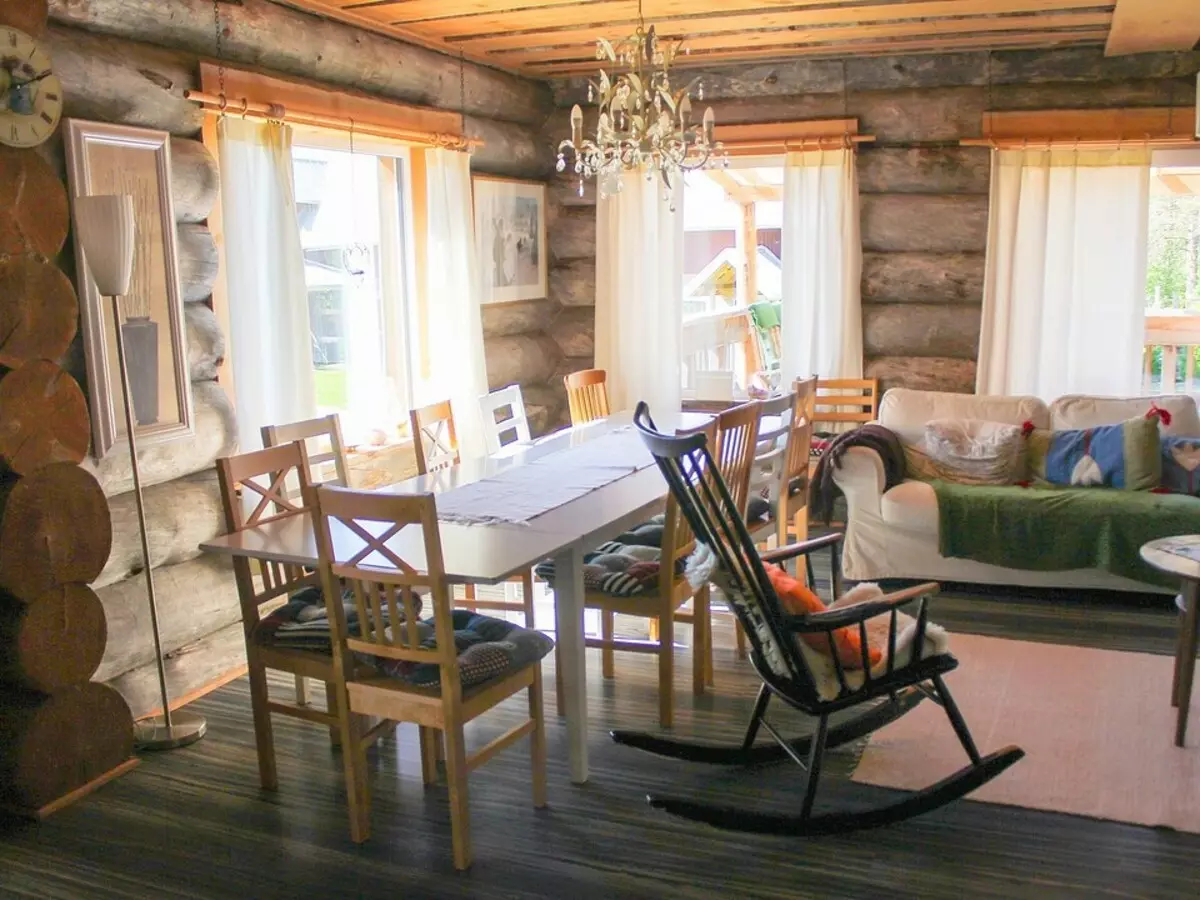
How to lay stacking
A series of logs or bars on the perimeter of the entire building are installed on the float layer. On top of the moss on top. After a short drying, the next crown is put. Thus rise to rafters. After the construction of the walls and the roof is carried out sealing gaps. You need to try when you hit not damage the array, as the moss is very soft.
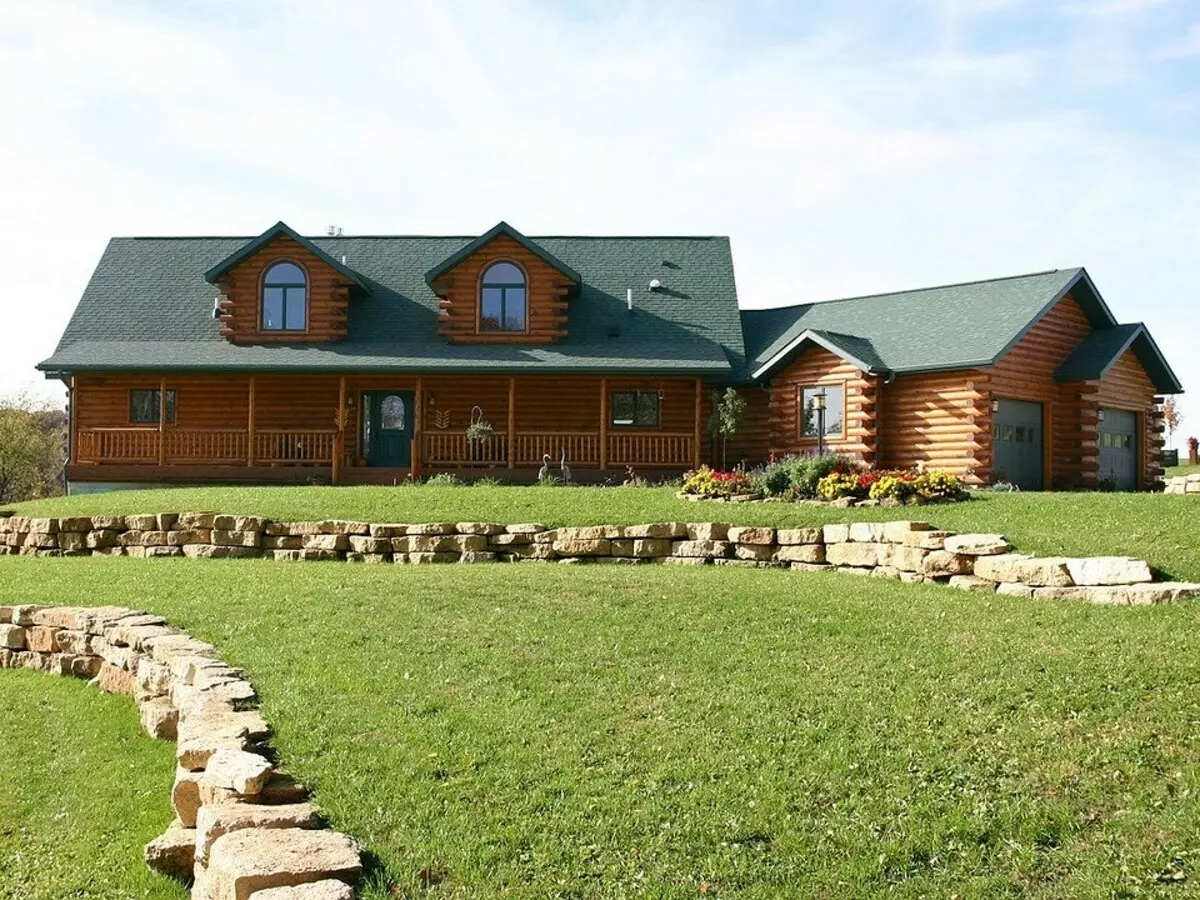
How to roam the log house with jute and other tape insulation
Konopka Srub Joutow, rolled felt and flanctin takes less time. It is carried out at the construction stage and during repair. In the first case, the rolls roll on each crown. Their width should be greater than the base for several centimeters so that the edges hang out on both sides. Then the next tier is mounted, and the edges are tamped.
In the second case, when all the tiers are already standing in their places, the roll rolls on the ground along the seam at its length. He must lie freely. It is not necessary to stretch it. The fabric is taken for a free end and plunge into the gap, hitting the center of the canvas. At the same time, there are two parallel edges of 5-7 cm. The movement leads from one angle to another. The fabric is cut along the length of the wall with a margin of 30 cm, because when driving it comes.
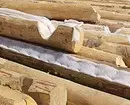
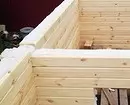
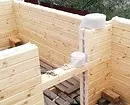
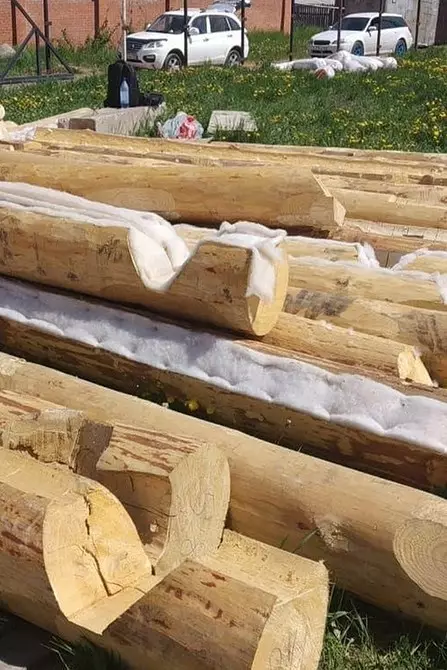
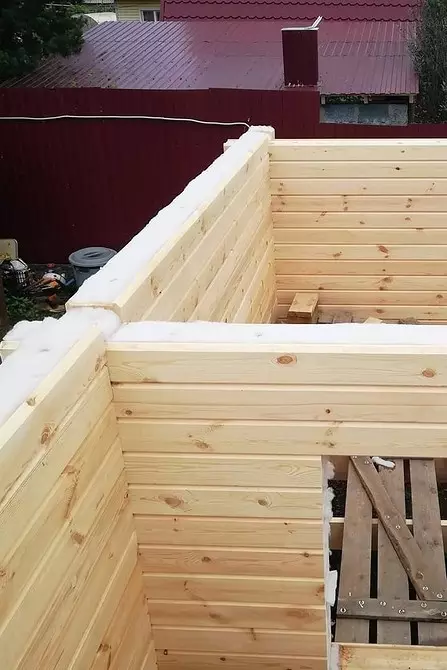
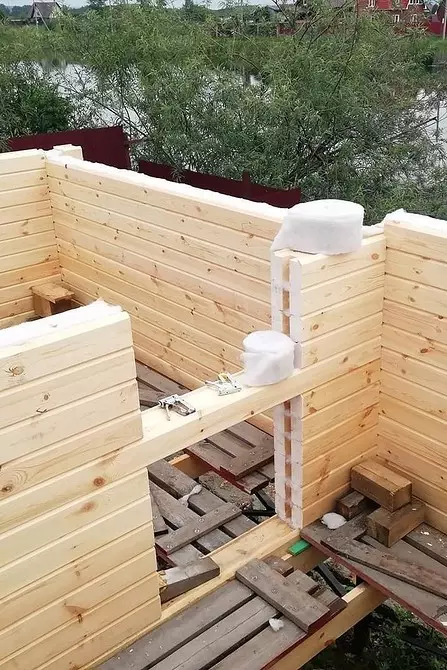
At the next stage, the protruding ends are converted and completely driven into the seam. One layer will be little. You need two or three. The finished roller protrudes on the surface by 3-5 mm. If you can handle it with your hands, you need to continue the trimmer.
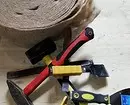
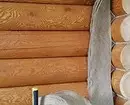
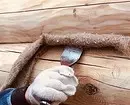
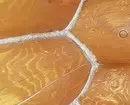
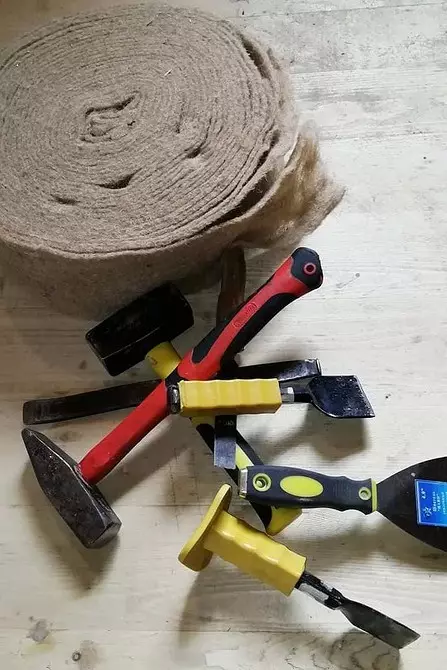
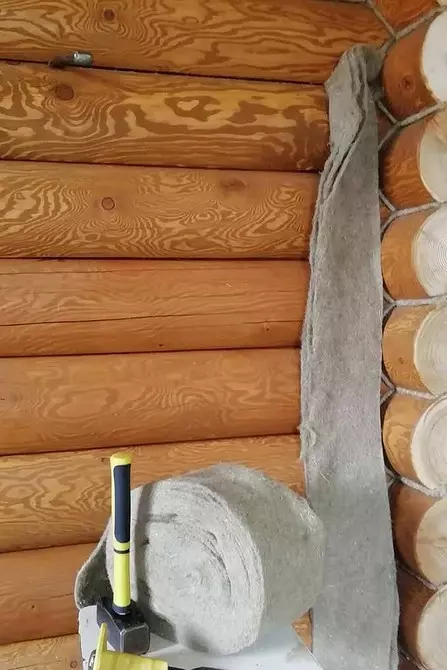
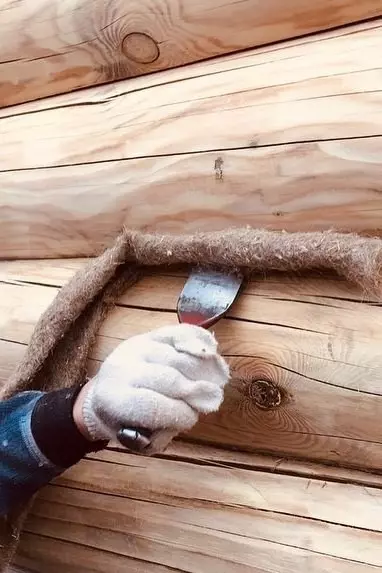
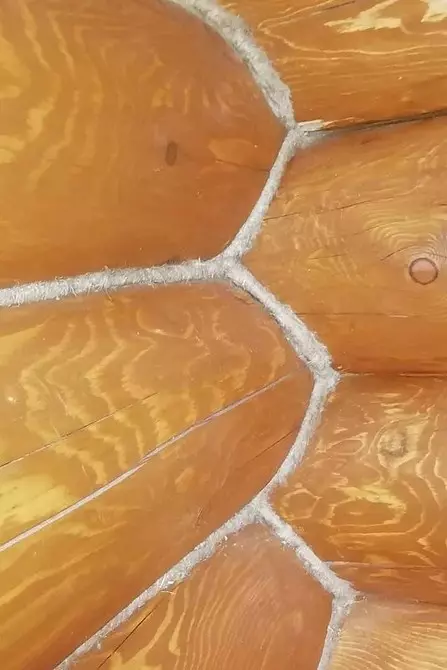
Dropping work. She takes a lot of time and effort, but with the right execution of all rules, the house will keep warm even in the strongest frost.
Instructions for insulation with ribbon material, see the video.
Warming with modern sealants
Sealants can be combined with traditional technologies or apply separately from them. The kit includes harness from porous polyethylene. It is not afraid of moisture, the effects of microorganisms and tolerate temperature changes well.
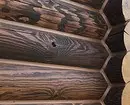
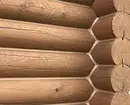
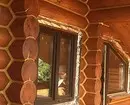
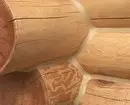
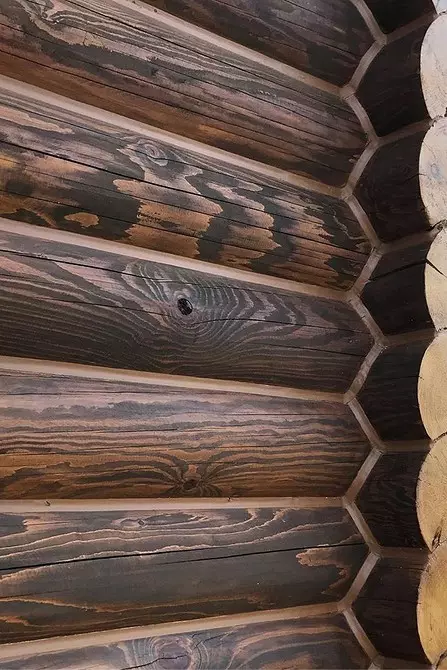
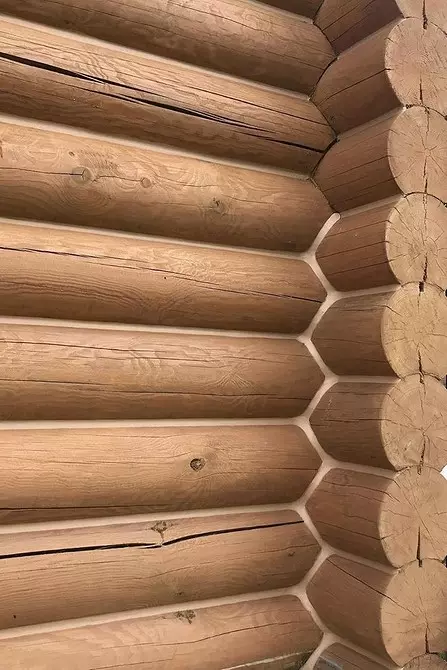
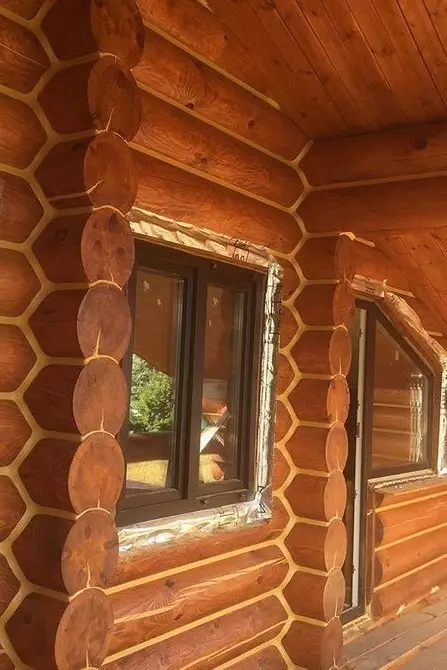
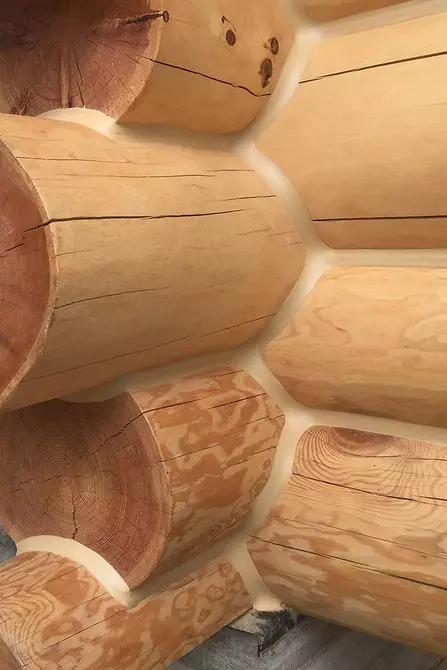
The elimination of emptiness is proceeded after the construction is completed. It is desirable that at this point the house gave shrinkage.
First, the gaps are cleared and removed from them garbage. Dust and condensate erase with a rag. The brush around the perimeter is placed primer. In winter, rubber primer is used, in warm weather - water. After its drying in the voids, the polyethylene harness of the appropriate size is placed and covered with a sealant. It is released in the form of tape, plastic mass in buckets, as well as in the canopy can be inserted into the gun. The surface is painted or lacquered with colorless composition.
